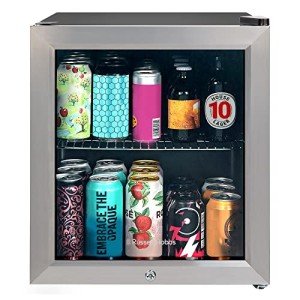The Role and Evolution of Commercial Coolers in the Modern Marketplace
In the bustling landscape of modern commerce, the role of commercial coolers can not be overstated. These important tools are the foundation of different industries, from grocery stores and benefit stores to dining establishments and health care centers. This short article explores the significance of commercial coolers, their types, developments, and the effect they have on service operations.
Intro to Commercial Coolers
Commercial coolers, also called commercial refrigerators, are developed to maintain a constant and regulated temperature level environment for the storage of disposable goods. Unlike Compact Drink Coolers Frydge , commercial coolers are constructed to hold up against heavy use and are geared up with features that make sure reliability and effectiveness in high-demand settings. They are essential for protecting the quality and security of food, beverages, and other temperature-sensitive products.
Kinds Of Commercial Coolers
Refrigerated Display Cases
- Vertical Coolers: Commonly found in grocery stores and corner store, these systems permit clients to see and select products quickly.
- Horizontal Coolers: Often used for showing beverages and small items, these systems can be either open or with glass doors.
Walk-in Coolers
- Walk-in Freezers: Large, room-sized units designed for bulk storage of frozen items.
- Walk-in Coolers: Similar to walk-in freezers but keep a greater temperature, appropriate for storing dairy, produce, and other perishables.
Undercounter Coolers
- Bar Coolers: Compact units created to fit under bar counters, ideal for saving beverages and mixers.
- Prep Coolers: Used in cooking areas for saving active ingredients and prepared foods.
Bottle Coolers
- Single-Door Coolers: Ideal for small areas, these units are frequently used in offices and small retail settings.
- Multi-Door Coolers: Larger systems with several compartments, ideal for high-volume sales environments.
Reach-in Coolers
- Single-Door Reach-ins: Compact and efficient, these systems are ideal for small organizations and dining establishments.
- Double-Door Reach-ins: Offer more storage area and are appropriate for medium-sized operations.
Advancements in Commercial Coolers
The technology behind commercial coolers has advanced substantially throughout the years, resulting in more efficient and sustainable options. Some significant advancements include:
- Energy Efficiency: Modern coolers are created to take in less energy, lowering functional costs and ecological effect. Features like LED lighting, high-efficiency compressors, and advanced insulation add to this.
- Smart Technology: Many commercial coolers now feature clever features, such as remote tracking, temperature signals, and automated defrost cycles. These technologies boost operational efficiency and product safety.
- Eco-Friendly Refrigerants: The usage of eco-friendly refrigerants, such as R-290 (gas) and R-600a (isobutane), is becoming more common, decreasing the carbon footprint of commercial coolers.
- Personalization: Manufacturers are using more customizable alternatives, allowing businesses to tailor their coolers to specific needs, such as size, style, and functions.
Impact on Business Operations
Commercial coolers play a crucial role in several aspects of organization operations:
- Product Preservation: By keeping optimal temperature level conditions, coolers ensure that products remain fresh and safe for intake, reducing waste and enhancing customer satisfaction.
- Operational Efficiency: Efficient cooling systems decrease downtime and maintenance costs, permitting services to concentrate on other crucial operations.
- Client Experience: Well-maintained and aesthetically pleasing coolers can boost the shopping experience, motivating customers to make purchases.
- Regulatory Compliance: Commercial coolers help services meet health and wellness policies, making sure compliance and avoiding penalties.
Frequently asked questions
Q: What is the distinction between a commercial cooler and a household refrigerator?
- A: Commercial coolers are created for heavy use and are developed with more robust materials and advanced features to make sure reliability and effectiveness in high-demand settings. Home refrigerators, on the other hand, are developed for personal use and are not equipped to manage the same level of use or storage capacity.
Q: How can I guarantee my commercial cooler is energy efficient?
- A: To ensure energy effectiveness, pick a cooler with an Energy Star ranking, use LED lighting, keep regular cleaning and upkeep, and consider clever functions like remote tracking and automated defrost cycles.
Q: What are the advantages of utilizing environment-friendly refrigerants in commercial coolers?
- A: Eco-friendly refrigerants, such as R-290 and R-600a, have a lower worldwide warming potential (GWP) and ozone depletion capacity (ODP) compared to standard refrigerants. This lowers the ecological effect of commercial coolers and assists companies meet sustainability goals.
Q: How often should I clean up and preserve my commercial cooler?
- A: Regular cleansing and maintenance are important for the optimum performance of commercial coolers. It is suggested to clean the cooler at least when a month and carry out a thorough maintenance check every 6 months. This consists of examining the seals, cleaning up the condenser coils, and ensuring the temperature level settings are precise.
Commercial coolers are indispensable in the modern market, supplying necessary services that guarantee the quality and security of disposable goods. With improvements in technology and a growing focus on sustainability, these systems are becoming more effective and eco-friendly. By understanding the different kinds of commercial coolers and their impact on company operations, owners and managers can make educated choices that benefit both their operations and the environment.

